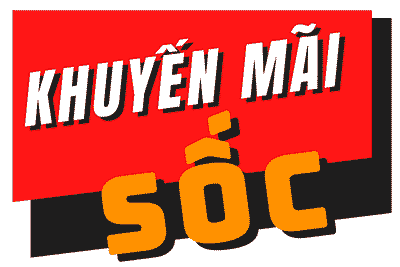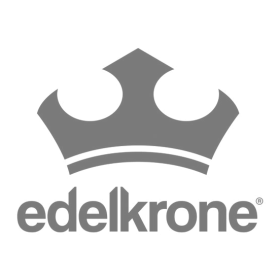You can then subtract any surrender charges to determine how much money you will receive in a cash surrender. This is usually a percentage of the cash value, as illustrated by a variable universal life insurance cash surrender value of life insurance balance sheet classification policy with a 10% surrender charge. The initial recording of CSV involves debiting the cash surrender value account and crediting the cash account for the premiums paid. This growth is typically credited to the CSV account and debited to an income account, reflecting the increase in the company’s assets. It’s important to note that the CSV is not a fixed amount; it fluctuates based on the policy’s terms and the insurer’s performance. One of the most important things to understand is that the cash surrender value is generally less than the total premiums paid into the policy.
1.2 Life settlement contracts
Surrendering a life insurance policy is a major financial decision that can bring immediate access to cash, but may also come with significant consequences. When you surrender your policy, you give up coverage in exchange for its cash value… but are there better options out there for you? It’s important to understand how the surrender process works, what it means for your beneficiaries, and whether there are better financial options available.
Is cash value of life insurance included in gross estate?
This involves obtaining periodic statements from the insurance provider, which detail the current surrender value. Any discrepancies between the recorded value and the actual value must be reconciled promptly. This ensures that the financial statements present a true and fair view of the company’s assets.
Life Insurance as Investment Tool Cash Value Life Insurance
- While surrendering provides access to funds, it also eliminates the policy’s death benefit and any future financial support the policy could offer loved ones.
- Each time you pay premiums for a cash value life insurance policy, such as a whole or universal life insurance policy, part of the premium is put towards the cash value.
- The cash surrender value is not reflective of the amount of coverage you have taken out for the death benefit.
- This technique will solely work for a brief period of time should you start while the cash value is simply too small or if interest rates are low.
- The lender usually advances up to 90% of paid-up cash value, as of the most recent payment date.
Loans secured by life insurance can be used to obtain bank credit, with the lender advancing up to 90% of the paid-up cash value. The cash value is determined from a schedule, which may be in the policy itself or from the insurance company issuing the policy. The insurance company will use your death benefit to pay whatever is left to your heirs after paying off the loan. If you die with an unpaid loan, the insurance company will use your death benefit to pay off the loan first. You can debit the insurance expense account when the annual premium is paid, crediting the chequing account for the same amount. A future death benefit, on the other hand, is not recorded as an asset because it’s a future event that the company can’t control.
In a whole life policy, the cash value growth is guaranteed, but during the early years, the savings portion brings very little return compared to the premiums paid. In year 15, the company uses the policy’s internal value to fund the cost of insurance, resulting in an increase in cash surrender value of $2,000, which is recorded as an insurance expense. The cash surrender value can vary depending on the type of policy you have and how long you’ve had it. For example, if you have a whole life insurance policy, you can expect to receive a higher cash surrender value than if you had a term life insurance policy. Regular reviews and adjustments are necessary to ensure the CSV is accurately represented.
Accounting for Life Insurance
Unlike the face value, the CSV is not fixed and can fluctuate based on various factors, including the premiums paid, the policy’s age, and the insurer’s investment performance. The face value, also known as the death benefit, is the amount the insurer agrees to pay to the beneficiaries upon the insured’s death. This sum is predetermined at the policy’s inception and remains constant throughout the policy’s life, barring any changes made by the policyholder. Generally, if the life insurance policy has a cash surrender value, that value should appear on the balance sheet. Any cash outflow above the year-over-year increase in cash surrender value will be expensed and reflected on the income statement. Term insurance does not usually have a cash surrender value, whereas UL and WL generally do.
Below are examples of metrics that management teams and investors look at when performing financial analysisof a company. Depreciation recapture is assessed when the sale price of an asset exceeds the tax basis or adjusted cost basis. Understanding the difference between these two concepts is essential for accurate accounting and financial reporting. PwC refers to the US member firm or one of its subsidiaries or affiliates, and may sometimes refer to the PwC network. This content is for general information purposes only, and should not be used as a substitute for consultation with professional advisors. Explore the performance of Australiansuper Balanced Super Fund and compare it with others for a smarter financial future.
Impact on Financial Statements
- A future death benefit is an economic benefit—one the company can’t control, so it should not be recorded as an asset.
- The answer is that yes, life insurance is an asset if it accumulates cash value.
- This inclusion can enhance the company’s financial position, potentially improving liquidity ratios and overall financial stability.
- A future death benefit is an economic benefit—one the company can’t control, so it should not be recorded as an asset.
The cash surrender value of the policy increases over time, and an adjusting entry is made to reflect this increase. In Aco’s case, the cash surrender value increased by $3,000 in the first year, $4,000 in year 12, and $2,000 in year 15. This section will delve into how corporations account for CSV, its impact on financial statements, tax implications, and the differences between CSV and face value. A financial asset is a liquid asset that gets its value from a contractual right or ownership claim. Cash, stocks, bonds, mutual funds, and bank deposits are all are examples of financial assets.
The cash surrender value of a life insurance policy provides a future economic benefit as it is the amount that can be realized by the company if the policy is surrendered. Some life insurance policies, especially variable universal and universal life insurance policies, may have surrender charges for the first years of the policy. A surrender charge is a charge from the cash value imposed by the insurance company for surrendering the contract early or withdrawing money early. Surrender charges can be very significant, especially in the early years of a policy. A future death benefit is an economic benefit—one the company can’t control, so it should not be recorded as an asset. A viatical settlement happens when someone sells their coverage for greater than their present money value, but less than the death profit payout.
Control Cycles in Financial Management and Accounting Systems
Of course, there are exceptions for good annuities and life insurance policies, depending on an individual’s life circumstances. In the case of an annuity product, make sure the benefits outweigh the lack of liquidity and flexibility. Also, at death, the amount of the policy cash value that is paid as part of the death benefit is taxable income. These days, however, not many companies offer their employees the option to purchase life insurance through their qualified retirement plan. During the trade, your objective should be to completely drain the cash value and transfer the full amount over to the death benefit or the face value. Both of those statements are general rules of thumb and are not always true depending upon your specific policy, and the amount of money that you have built up.
The difference between the premiums paid in the year and the increase in the cash surrender value is recorded as the net insurance expense on the income statement. In the later years of the policy, the increase in cash surrender value may exceed the premiums paid in the year. However, if you’re unable to pay the policy loan’s annual interest and the policy lapses, you run the risk of losing coverage and having a large tax payment. This is what makes universal life insurance policies so much more expensive than term policies. Then the insurance company invests the additional premium, and you get some of the returns.














